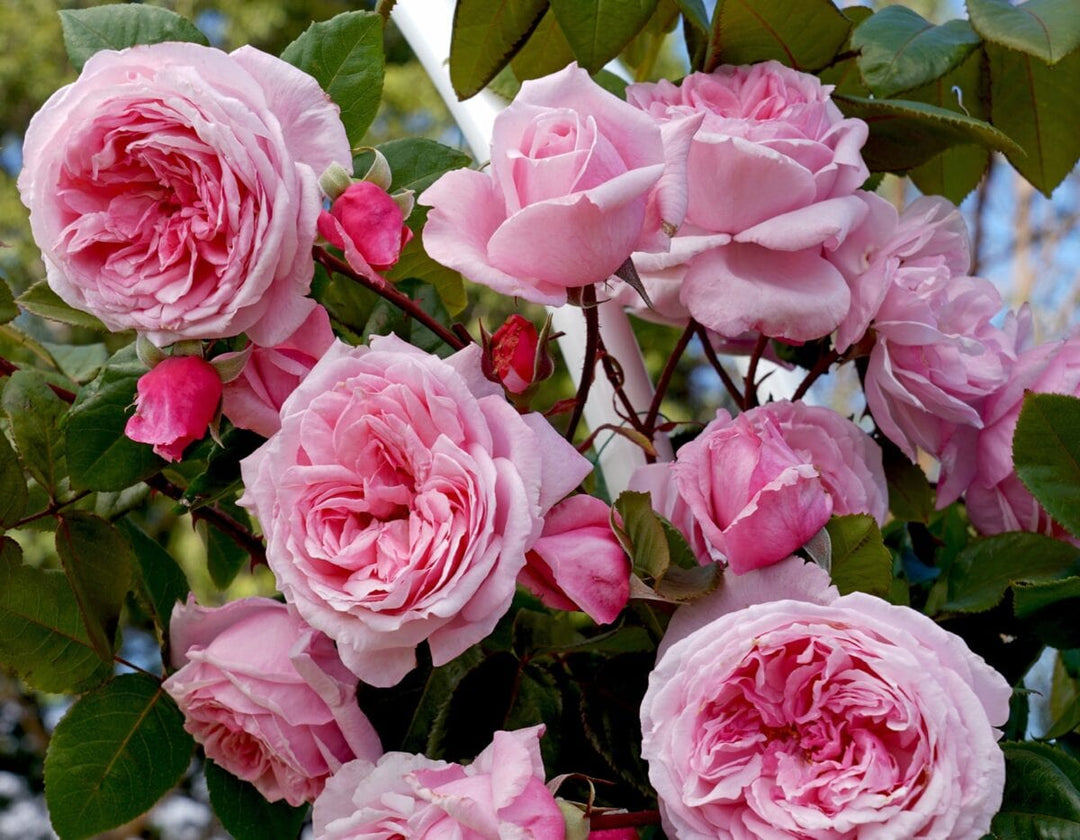Onion Annual Bunching - McKenzie Seeds
- Canada-Wide Shipping
- Flat Rate Shipping on Seeds
- Secure Payment & Checkout
- In stock, ready to ship
- Backordered, shipping soon
Allium cepa
- Open Pollinated
- Delicately flavored
- 12 to 14 days to germination
- 60 to 75 days to maturity
- Companion Planting: Bean sprout, broccoli, cabbage, lettuce, strawberry tomato
Annual Bunching Onions are the most popular onion strain for bunching. Produces extra-long white shanks with delicious, mildly sweet green stalks.
1.25g. (Approx. 350-375 seeds)
Sow seed direct into the garden after danger of frost has passed. Fertile, well-drained, non-crusting soil is best. For an earlier crop, start indoors 8-10 weeks before the last frost.
Planting Depth: 1.3 cm (1/2")
Plantling Spacing: 5 cm (2")
Row Spacing: 30 cm (12")
Hilling soil well up around the plants encourages the development of longer white stalks.
Preparation Ideas: Also known as scallions, they are used to add color and flavor to a wide array of dishes. Rinse to clean, and trim both ends. Thinly slice the greens and the bulbs and add to potato salads, green salads, omlettes, and soups.
When to Plant
Start seed indoors 8-10 weeks early and transplant outside in spring. Or directly seed into the garden in early spring as soon as the ground can be worked.
Location/Soil
In full sun, plant onions in a rich, fertile and well drained area of the garden. Crop rotation is a must to deter disease and pests. It is recommended to wait 4-5 years before planting onions in the same location again.
Planting & Growing Information
Sow seeds 13 mm (1/2″) deep and 2.5 cm (1″) apart. If sowing direct be sure to thin young seedlings so that plants are spaced 5-10 cm (2-4″) apart with rows spaced 30 cm (12″) apart.
Seeds germinate in approximately 12-14 days.
Days to Maturity
From date directly sown in garden.
Other Information
Use thinned seedlings that are removed from the row in salads and other dishes – they are delicious!
Keep onions well watered during the season to ensure proper bulb development.
Harvesting & Storage
Onions can be harvested at anytime throughout the growing season depending on the needs of the gardener and how the onions are to be used.
In late-summer or fall, when onion tops begin to fall over, turn brown and wither, it is time to harvest.
Pull the onions and if possible just leave where they are in the garden to dry in the sun or spread bulbs out in a dry place for up to week. Once the outer layer of the onion becomes well dried (cured) they can be stored.
Onions can be stored in a cool dry location. Use a mesh bag or old nylon stockings to store onions to make sure there is good air circulation.
Onions stored at room temperature will not last as long.
Well cured onions can keep well into later winter – check regularly for any sprouting or rotted bulbs.
Companion Planting
Likes: Bean sprout, broccoli, cabbage, lettuce, strawberry tomato.
Onions Examined
There are many different varieties of onions, which can generally be placed in one of two categories: green or dry.
Green onions are harvested while the shoots are still young and vibrant in color. The result is the long bunches of green tubular-shaped produce.
Dry onions refer to large, bulbous onions that have a shiny outer layer of skin. Unlike the green onion, dry onion types are harvested once the shoots die off. They come in different colors, ranging from red, to yellow, and white. Dry onions are also categorized as either sweet or storage varieties. Sweet varieties (like Walla Walla) are best used up shortly after harvest and storage varieties (like Onion Redwing), when properly cured, can last well into the winter months.
Green Onion – Also known as, spring onion, salad onion, or scallion, and bunching onion, they are milder than other onions. They are harvested while their shoots are still young and green. They can be chopped and used as a topping or an ingredient.
Leek – A pale green and white member of the onion family, the unique mild flavor of the leek can be compared to a cross between onion and cucumber. The edible part of the leek, also known as the stalk or stem, is a bundle of leaf sheaths. Best when eaten raw, made into leek soup or fried, since boiling makes them mushy.
Shallots – closely related to multiplier onions, but smaller. At maturity, shallot bulbs resemble small onions. They are eaten fresh or cooked, chopped or boiled. Shallots have a delicate onion/garlic flavor when cooked that adds to but does not overpower other flavors.
Multipliers – At maturity, this type of onion produces small clusters of onion bulbs that are excellent for cooking. Earlier in the season the greens can be harvested for eating. Depending on the needs of the gardener, multipliers can be harvested and used throughout the season whether it is the young fresh greens, early onion or mature bulb.
Red Onions – Wonderful onions with purplish red skin and white flesh tinged with purple. An all around winning selection with a mild to sweet flavor which is excellent when eaten raw in salads or on burgers but are also a terrific onion for cooking. The flesh loses its purplish color when the onion is cooked.
Spanish Onions – These onions have a rich golden colored skin. They tend to have a particularly sweet, mild flavor making them wonderful to eat raw or include in a variety of cooking dishes. These are similar to yellow onions, only larger and a bit sweeter.
White Onions – An onion with a white skin and a strong tasting white flesh. Use white onions raw in salads, barbecued on shish kebabs, in stews and soups, on sandwiches and in meat dishes.
Yellow Onions – The most common type of onion, yellow onions have a brown skin and white flesh. Yellow onions have a nice strong flavor and are suitable for most any recipe.
Onion Sets
An onion set is a small bulb. When planted it will grow a larger bulb and is an ideal selection for gardeners who cannot start onions early. They are easy to plant and quickly develop into onion bulbs. Plant approximately 2.5 cm (1”) deep or so that only the tip shows above the ground and about 8 cm (3”) apart.
Canada Shipping
All regular packaged seed* orders have a flat rate shipping fee starting at $6.85 for Letter Mail shipping and $14.85 for Expedited Shipping.
*Some Bonus Packs, Sprouting Seeds, Bulk packs, Sprinkle Bags, and Sprinkle Cans will only be available with Expedited Shipping due to larger packaging and weight.
US Shipping
US Shipping has been suspended indefinitely. We apologize for any inconvenience this may cause. We hope to serve our US customers again in the future.










